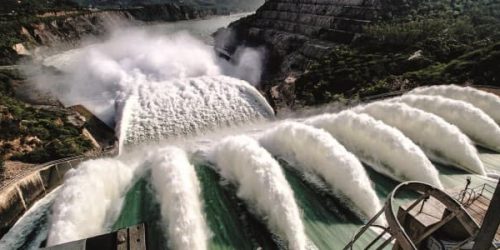Few global projects receive the same amount of praise and criticism as China’s Belt and Road Initiative (BRI) does. Regardless of one’s opinion, the BRI is President Xi’s signature foreign policy project with magnanimous allure. According to Morgan Stanley, overall expenses could reach $1.2-1.3 trillion by 2027. Beijing has invested significantly not only in financial terms but also politically. In this context, the success of the China-Pakistan Economic Corridor (CPEC) is essential to showcase Beijing’s model of development. The CPEC was announced in 2013 in response to the countries’ economic needs and political necessities. After the election that brought Imran Khan to power, Chinese-Pakistani relations entered a difficult phase due to the criticism of the new government concerning the conditions of the loans. More recently, however, the CPEC has seen a revival as the countries have settled certain differences and signed new multibillion agreements in amongst others the energy domain.

An unholy alliance
In several ways, Pakistan is China’s only real ally. Beijing’s disdain for formal alliances stems from its believe that it could restrain the country from pursuing its interests. Pakistan is an exemption that China is willing to tolerate due to the south Asian country’s weaknesses and dependence on its giant neighbor.
The CPEC was meant to become the poster child project for Chinese international economic cooperation. Pakistan’s prime minister Imran Khan, however, quickly sought to renegotiate the terms of its loans due to the connection with the previous regime. Also, debt insolvency was becoming a serious problem. After a tough round of talks, Islamabad secured several concessions and an IMF bail-out. The CPEC is back on track albeit relatively modest as certain activities have been put on the back burner.
Related: Oil Prices In Limbo As Fears Of A Second COVID Wave Grow
Already, several large projects have been completed including nine undertakings that are producing 5,320 MW of electricity worth $7.9 billion while another 4,470MW is being constructed. According to Samiullah Tariq, head of research at Pakistan Kuwait Investment Company, the completed facilities are “low hanging fruits like coal and LNG power projects. China is a critical ally for Pakistan to continue growth.”

The necessity of collaboration
The Chinese investments are without doubt essential to Pakistan. Few international companies and banks are willing to take similar risks as the Chinese do. Although the motives are obviously partly political, the CPEC could eventually transform Pakistan’s backward economy. The stakes are high for both countries, but so are the rewards.
The recent announcement of two large hydro projects and the refurbishment of the country’s colonial-era rail infrastructure is a catalyst for lingering projects. The timing and location of the dams is also very peculiar. China has been facing strong opposition due to multiple reasons such as the handling of the novel Coronavirus outbreak and its assertiveness in its near-abroad.
Beijing border conflict with India is an important reason for the timing of the announcement. In June a long simmering rivalry erupted in the Himalayas killing dozens of Indian soldiers and an unconfirmed number of Chinese. The strengthening of ties with the former’s arch-rival Pakistan fits in the context of this conflict.
Previously, Beijing had been wary of unnecessarily angering its large south Asian neighbor. The hydro projects are a clear reversal of its policies and meant to put pressure on New Delhi as they are located in Pakistan-administered Kashmir which is also claimed by India. The move will most likely anger the latter and further add tension to the already difficult relations with China.
For Beijing, the strengthening of ties with Pakistan doesn’t only serve political goals but ensures a steady output for Chinese made products. Over the decades, a tremendous industry and production capacity has been established in an increasingly saturated country when it comes to infrastructure projects. Investing in Pakistan ensures an export market for surplus Chinese products due to industrial overcapacity.







